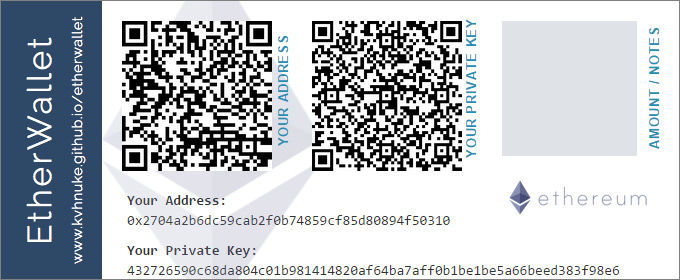Crypto wallets are an integral part of using Bitcoin and other cryptocurrencies. They are one of the basic pieces of infrastructure that make it possible to send and receive funds through blockchain networks.
In this article, we are going to cover the evolution of cryptocurrency storage and evaluate the different types of wallets so that by the end of reading this article, you would be sufficiently well-versed and educated regarding the history of wallets and be properly equipped to decide which crypto wallet option is best for you.
Firstly, if you are new to Blockchain and how it operates, here’s a brief overview of the technology powering cryptocurrency wallets, to better understand exactly how they work.
How Wallets Work?
Contrary to popular belief, crypto wallets don’t truly store “coins”. What owners of cryptocurrency do own is a piece of code called UTXOs (Unspent Transaction Outputs). Since the cryptocurrencies never leave the blockchain space, the wallet’s work is to generate the necessary information to send and receive cryptocurrency via blockchain transactions. Such information consists of one or more pairs of public and private keys. For the cryptocurrency investor, the cryptographic public keys and private keys are the most important elements of a cryptocurrency wallet. Public keys are similar to account usernames; they identify the wallet so that the user can receive tokens without revealing their identity. Private keys (or seed phrases) are similar to pin numbers; they allow the user to access the wallet and check balances, initiate transactions, and more. The wallet also includes an address, which is an alphanumeric identifier that is generated based on the public and private keys. Such an address is, in essence, a specific “location” on the blockchain to which coins can be sent to.
Technically the process of a transaction is as follows: to make a transaction one will need to sign (confirm) the transaction with a private key as a digital signature. The wallet will then check with the blockchain the amount of UTXOs there are available. The blockchain will confirm the amount of UTXOs the wallet has, before sending the transaction to the nodes in the network to verify that the transaction makes sense. Transactions are then placed in a ‘mempool’, a waiting area for unconfirmed transactions to be chosen by miners to verify, complete, and append the transaction to the blockchain.
Timeline of Bitcoin Wallets:
- 2009
Satoshi Nakamoto began working on the first bitcoin wallet concurrently with his development of the Bitcoin protocol, as he knew that these coins had to be stored somewhere, and as such in February 2009, was the release of Bitcoin-Qt wallet – the first-ever Bitcoin wallet. It was a full client wallet, which meant you had to download the entire blockchain history for it to sync, which back then wasn’t an issue, since there was precious little history to record. While functionality was limited, the Qt wallet did have a few advanced features to it. In addition to sending and receiving coins and incorporating an address book, it enabled the user to digitally sign arbitrary messages, proving that they were the owner of a particular public key.
- 2014
In 2014 as the price of Bitcoin began to reach $1,000, people soon realized they needed a safer way to store their newfound wealth. A company named TREZOR (Czech for “vault”) was the first to release a cold storage consumer hardware wallet as we know it today, the TREZOR One.
Alongside, in 2014 the first Ledger Nano was released and quickly managed to stand out thanks to its attractive price and security features – specifically, its use of a second-factor authentication (2FA) card.
- 2015 – 2016
The popular next step included larger and more defined screens for devices to further improve security while also giving something back to the whole user experience. KeepKey is a company that hit the market in 2015 and focused on those elements and did well for itself by virtue of its large, clear display screen.
2016 was the year when the next-gen Ledger Nano S arrived on the market. It added the now-standard screen in lieu of the 2FA card, cementing its position as one of the most popular options around and sliding into the market as the cheapest hardware wallet with a screen.
- 2017 – now
The Ledger Nano S is still standing here from 2017 and is accompanying crypto-mania that is rolling around. As one of the most highly-regarded options at the time, the Ledger was in a position to catch as much of the new market as it could carry, and the Ledger Nano S was flying off the shelves. Suddenly everyone is doing bitcoin, and there isn’t a hardware wallet manufacturer on the planet able to keep up with the unprecedented surge in demand.
Types Of Wallets:

According to the way they operate, cryptocurrency wallets may be defined as “hot” or “cold”.
Hot wallets:
A hot wallet is any wallet that is connected somehow to the Internet. The main purpose of holding cryptocurrency in a hot wallet is to facilitate basic transactions. Individuals looking to actually make purchases with their cryptocurrency assets might consider choosing a hot wallet. They are the ideal option for storing small amounts of bitcoin and other cryptocurrencies and are a fast way of spending and receiving payments. These wallets are quite easy to set up, and the funds are quickly accessible, making them convenient for traders and other frequent users.
Think of a hot wallet like your wallet today: you use it to store some cash, but not your life savings. Hot wallets are great if you make frequent payments, but not a good choice for the secure storage of bitcoins. – Jordan Tuwiner Founder, Buy Bitcoin Worldwide
Cold wallets:
Cold wallets have no connection to the Internet. Instead, they use physical gadgets to store the keys offline, making them resistant to online hacking attempts. As such, cold wallets tend to be a much safer alternative to “storing” coins. This method is also known as cold storage and is particularly suitable for long-term investors.
Wallets come in many forms in a matter of how they can be stored. Generally, wallets are divided into three main groups – Software wallets, Hardware wallets, and Paper wallets.
Software wallets:
Software wallets come in many different types, each with its own unique features. Most of them are somehow connected to the Internet and are considered hot wallets. The following are descriptions of some of the most common types of software wallets: web, desktop, and mobile wallets.
Web wallets:

Web wallets are used to access blockchains through a browser interface and are also known as hot wallets.
These web wallets store your private keys on a web server (very insecure), which is constantly online and controlled by a third-party operator. Different services offer different features, some of which can link to mobile and desktop wallets and replicate your addresses across the devices you own. But bear in mind that these wallets are connected to the internet, so it is not advisable to be holding large amounts of money in them, as online wallets are more vulnerable to hacks and security attack vectors.
There are other variations of the web wallets – browser extension wallets which are running locally on your machine in your browser as an add-on or extension. They are considered to be safer than the abovementioned – of course when they are developed by well-known trusted developers and/or with an open-sourced codebase which you can verify at any time.
Some web extension wallets allow you to store cryptocurrencies native to a specific network – for example, the MetaMask wallet that can hold an Ethereum-based ERC-20 or ERC-721 token.
While others such as Waellet – browser extension wallet enabling you to transact with aeternity tokens or any AEX9 compatible fungible tokens on the aeternity network, are also enabling you with additional developer-focused functionalities such as token creation and deployment, an integrated naming system, and more (check out the roadmap as well).
Desktop wallets:
Desktop wallets are installed on a desktop computer and provide the user with complete control over the wallet. When a new desktop wallet is generated, a file called wallet.dat will be stored locally on your computer. This file contains the private key information used to access your cryptocurrency addresses. In general, desktop wallets may be considered safer than the web and mobile wallets, as they don’t rely on third parties for their data and are harder to steal.
They are still connected to the internet, which makes them less secure. However, desktop wallets are a great solution for those who make frequent transactions of small amounts from their computers. It’s crucial to just make sure your computer is clean of viruses and malware before setting up a desktop cryptocurrency wallet.
Mobile wallets:

Mobile wallets function much like desktop wallets but are designed specifically as smartphone applications. They are quite convenient as they allow you to send and receive cryptocurrencies through the use of QR codes. As such, mobile wallets are particularly suitable for performing daily transactions and payments, making them a viable option for spending Bitcoin and other cryptocurrencies in the real world. Just as computers, however, mobile devices are vulnerable to malware infection. So it’s recommended that you backup your private keys (or seed phrase) in case your smartphone gets lost or broken.
Hardware wallets:

Usually, hardware wallets are physical, electronic devices that look like a USB flash drive, that uses a random number generator (RNG) to generate public and private keys, where the private key is stored in the device itself. These are cold wallets because they can only be accessed by being plugged directly into a computer and do not require an internet connection in order for a user to access their cryptocurrency funds. Some of the newer editions are enabled with Bluetooth so you can use them with your mobile phone as well.
Hardware wallets are by far the most secure type of cryptocurrency wallet and are practically immune to virus attacks and there have been no verifiable incidents of money being stolen from a hardware wallet. If a cryptocurrency investor’s plan is to hold crypto for a long time or is holding large amounts of cryptocurrency – a hardware wallet is the ideal option for storing those. These devices, however, are the only wallets that are not free, and they can cost up to $200 and are often referred to as not user-friendly and can be challenging for new users to understand.
Paper wallets:

Paper wallets also make use of public and private keys. Cryptocurrency users wishing to store their holdings in a paper wallet typically involve printing out an address and its private key onto a piece of paper. To set up a paper wallet, one should visit a wallet generator website or run one locally which will generate a keypair and present the keys in the form of QR codes. These codes can then be scanned using a mobile or another device to import into wallet software and later execute cryptocurrency transactions. It’s generally advised that users unplug their Internet access while the keys are being generated and that users wipe their Internet history after the keys have been created.
It’s important to understand those paper wallets aren’t suitable for sending funds partially, but only their entire balance at once. If you want to spend part of the funds, you should first send all the tokens to another type of wallet (e.g., a software wallet), and only then spend part of the funds. Although a paper wallet is considered an extremely secure way to keep bitcoins safe from cyber-attacks, malware, etc., they also come with risks, some of them severe. If the printer used for getting those on the paper used inexpensive ink, it may run or fade with time, wallet software no longer recognizes the private key format of the printed wallet, or the paper is lost, stolen, ripped, or otherwise damaged, making the wallet inaccessible.
Conclusion:
Each wallet type has its advantages and disadvantages, so it’s crucial to understand how they work and what you are going to use them for before making a choice with a wallet. For most users who are used to making on-the-go transactions, mobile wallets are the best option. However, hot storage systems are exposed to hackers and malware infection. If you are looking for long-term investment hardware and paper-based versions of wallets are the most secure alternatives for the job.
No matter what wallet you choose to use, it’s important to remember to never share your private keys or the seed phrase, to keep both your wallet and mobile/desktop software up to date, to make regular backups, and enable multi-factor authentication features whenever possible.
If you have more questions regarding crypto wallets or anything concerning blockchain technology, don’t hesitate to contact Hack’s team!



